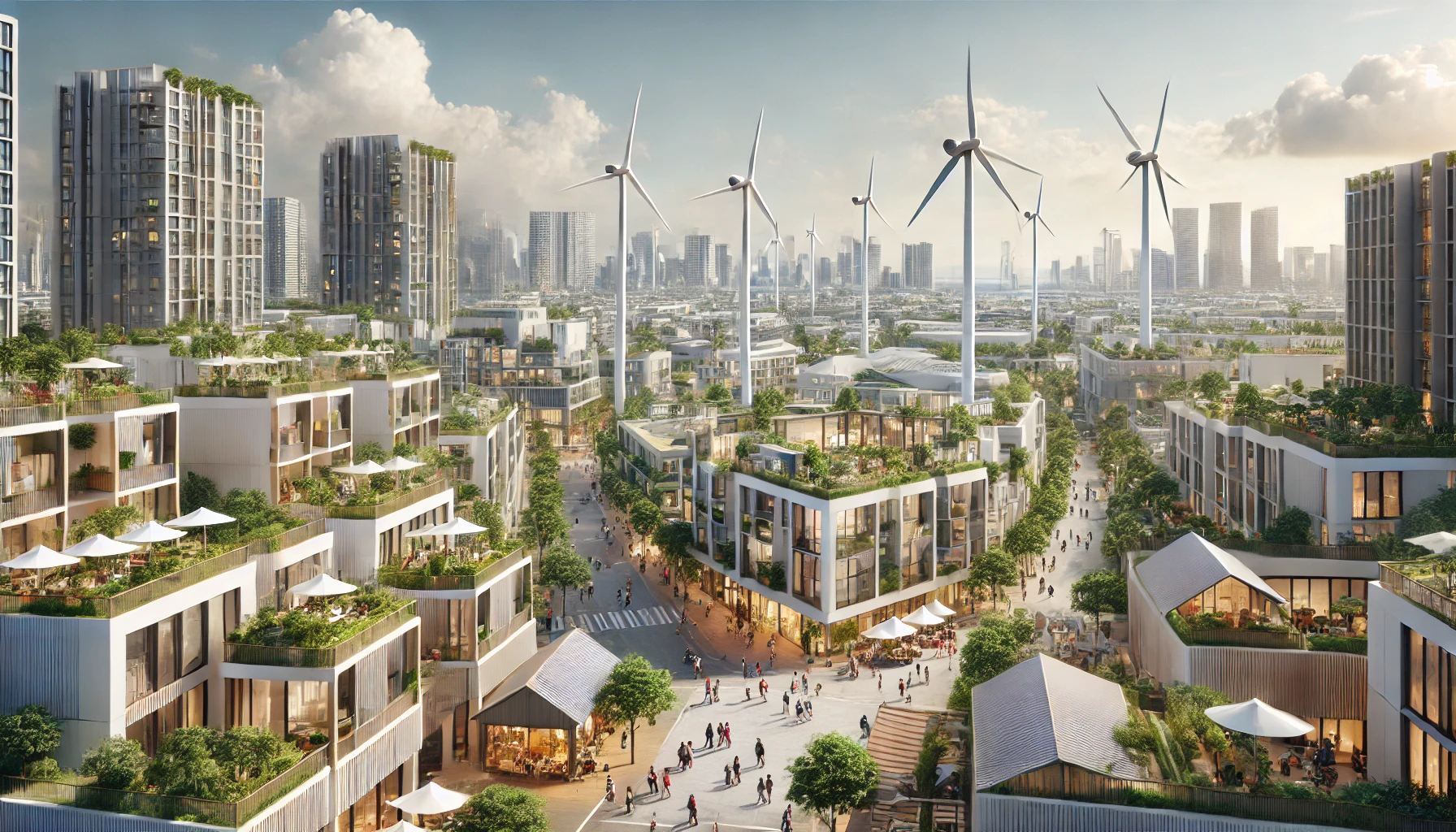Wind power is an increasingly popular form of renewable energy. However, integrating wind power projects into urban environments presents unique challenges and opportunities. This article delves into the key aspects of implementing wind power projects in urban communities, exploring their benefits, obstacles, and practical steps for successful integration.
The Benefits of Wind Power in Urban Areas
Environmental Advantages
Urban areas are significant contributors to greenhouse gas emissions. By implementing wind power projects, cities can reduce their carbon footprint significantly. Wind power is a clean, renewable source of energy that does not produce harmful emissions or pollutants, making it an ideal solution for environmentally conscious cities.
Economic Benefits
Wind power can also provide economic advantages. Once the infrastructure is in place, the cost of generating electricity from wind is relatively low. Urban wind projects can create jobs in manufacturing, installation, maintenance, and operation, stimulating local economies.
Energy Security
Urban wind power projects can enhance energy security by diversifying the energy supply and reducing dependence on fossil fuels. This is particularly important in urban areas, where energy demands are high, and the consequences of power outages can be severe.
Challenges of Urban Wind Power Projects
Space Constraints
One of the most significant challenges is the lack of available space. Unlike rural areas, cities do not have vast expanses of land where large wind turbines can be easily installed. Innovative solutions, such as smaller, building-integrated turbines, are essential to overcome this obstacle.
Regulatory and Zoning Issues
Urban areas often have strict building codes and zoning regulations that can complicate the installation of wind turbines. Navigating these regulations requires careful planning and collaboration with local authorities.
Aesthetic and Noise Concerns
Residents may have concerns about the visual impact and noise generated by wind turbines. Addressing these concerns is crucial for gaining community support. Modern turbine designs are increasingly focused on minimizing noise and blending with urban landscapes.
Practical Steps for Implementing Wind Power in Urban Areas
Conducting Feasibility Studies
Before embarking on a wind power project, conducting comprehensive feasibility studies is essential. These studies should assess wind resources, potential sites, and the economic viability of the project.
Engaging with the Community
Community engagement is a critical component of successful urban wind projects. Involve residents and stakeholders from the beginning to address their concerns and gather support. Transparent communication and education about the benefits of wind power can build trust and acceptance.
Collaborating with Local Authorities
Work closely with local government officials to navigate regulatory and zoning issues. Obtain necessary permits and ensure that the project complies with all local regulations. Collaboration can also open up potential funding opportunities and incentives.
Utilizing Innovative Technologies
Innovative technologies can help overcome some of the challenges of urban wind power projects. For instance, vertical-axis wind turbines (VAWTs) are more suited to urban environments than traditional horizontal-axis turbines. They are quieter, require less space, and can be installed on rooftops or integrated into buildings.
Developing a Maintenance Plan
Maintaining wind turbines in an urban environment requires a robust plan. Regular inspections and maintenance are crucial to ensure the turbines operate efficiently and safely. Partnering with experienced maintenance providers can help manage this aspect effectively.
Case Studies of Successful Urban Wind Projects
Case Study: The Windspire in San Francisco
San Francisco has been a pioneer in urban wind power projects, having installed Windspire turbines. These sleek, vertical-axis turbines are designed to be quiet and efficient, making them ideal for urban settings. The project has successfully integrated renewable energy into the city’s power grid, reducing its carbon footprint.
Case Study: Urban Wind Energy in Rotterdam
Rotterdam has implemented several small-scale wind turbines across the city, particularly in industrial areas. The city’s approach focuses on blending wind power with existing infrastructure, such as bridges and buildings. This project has not only provided renewable energy but also served as a model for other cities.
Critical Considerations for Urban Wind Power Projects
Implementing wind power projects in urban communities involves various vital considerations to ensure success. Site selection is crucial, as urban areas have limited space and unique wind patterns. Community involvement is essential to address potential concerns about noise and aesthetics. Collaborating with local authorities can help navigate regulatory challenges and secure necessary permits. Utilizing innovative turbine designs, such as vertical-axis turbines, can optimize performance in urban settings. Regular maintenance and inspections are required to keep the turbines operational and safe. By focusing on these aspects, cities can effectively harness wind power to meet their renewable energy goals.
Conclusion
Implementing wind power projects in urban communities offers numerous benefits, from reducing carbon emissions to enhancing energy security. However, it also presents unique challenges that require innovative solutions and community involvement. By conducting thorough feasibility studies, engaging with the community, collaborating with local authorities, and utilizing advanced technologies, cities can successfully integrate wind power into their energy portfolios. Examples from San Francisco and Rotterdam demonstrate the potential for urban wind projects to make a significant impact. As more cities embrace this renewable energy source, we can look forward to a cleaner, more sustainable future.
By understanding the intricacies and taking strategic steps, urban communities can lead the way in the renewable energy revolution, showcasing the power of wind to transform our cities.

